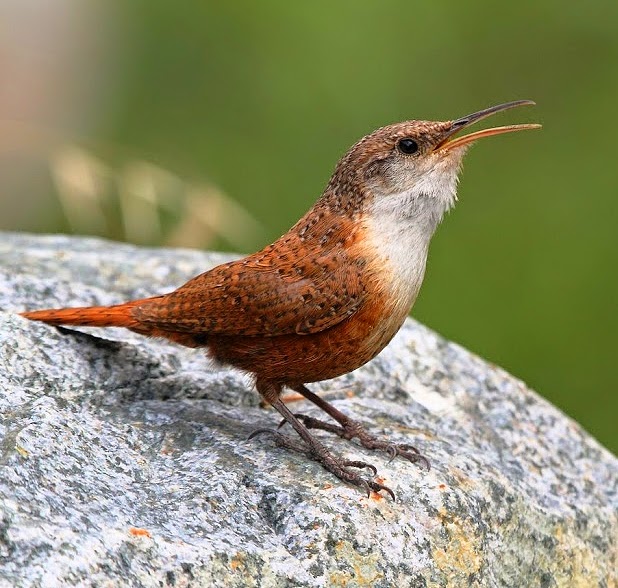 |
| Photo by Waldemar Sikorski (Photography on the Net) |
Common name:
canyon wren (en); carriça-dos-desfiladeiros (pt); troglodyte des canyons (fr); cucarachero barranquero (es); schluchtenzaunkönig (de)
Taxonomy:
Order Passeriformes
Family Troglodytidae
Range:
This species is western North America, from British Columbia to Minnesota and South Dakota and south to Mexico as far as Chiapas.
Size:
These birds are 11-15 cm long and have a wingspan of 19 cm. They weigh 10-18 g.
Habitat:
The canyon wren is found in arid areas with canyons and cliffs, rocky areas and boulder piles, as well as dry scrublands. They are present from sea level up to an altitude of 3.000 m.
Diet:
They feed on spiders and insects collected from rock crevices or sometimes in flight.
Breeding:
Canyon wrens are monogamous and pair bonds may last more than one breeding season. They nest on rock crevices and cliff, often under a ledge, where they build a cup made of twigs and grasses, and lined with lichens, plant down, wool, spider webs and feathers. The female lays 4-7 white eggs with reddish-brown and grey speckles, which she incubates alone for 12-18 days while being fed by the male. The chicks are fed by both parents and fledge 10 days after hatching. Each pair produces 1-2 broods per year.
Conservation:
IUCN status – LC (Least Concern)
This species has a very large breeding range and the global population is estimated at 400.000 individuals. The population has undergone a small decline over the last 4 decades, but it is not threatened as their secluded habitats protect them from most human activities. Recreational rock climbing may disturb nesting areas.







